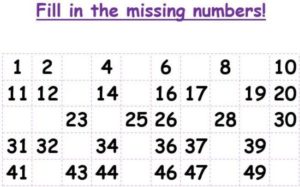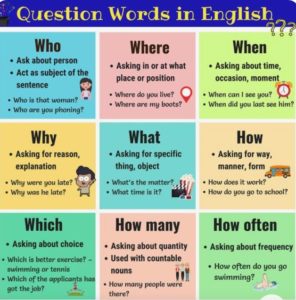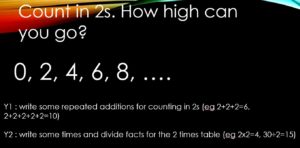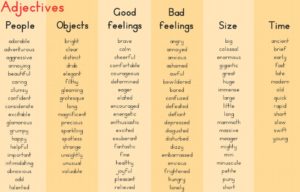31 March 2020: Home learning
Happy Tuesday!
Here are the answers to yesterday’s maths learning: Year 3, Year 4.
Today’s learning:
Maths:
Year 3 – find your addition and subtracting packs. Complete the “adding 3-digit and 2-digit numbers – no carrying” page. Remember to be careful where you place you numbers. Keep the ones under the ones column and tens under the tens column.
Year 4 – find your addition and subtraction packs. Complete the “Finding missing numbers in column subtraction calculations” page. You might need to exchange some tens or hundreds to find the right number to fill the missing gap.
Reading:
The reading task today is an advert for an Anglo-Saxon house.
Writing:
https://www.literacyshed.com/dreamgiver.html
Imagine your friend has never seen the Dreamgiver before. What does the Dreamgiver look like? Can you describe him? Draw a picture of him and label.
Challenge: Find images that you would like the Dreamgiver to crack his egg onto. Then describe the dreams that happened afterwards.
Handwriting:
Complete the first of your handwriting sheets – these are in your learning packs. (There is a spare copy here!) The words that you are practising to write neatly are part of the Y3/4 word list.
31 March 2020 : Home learning
Good morning!
Keep going with reading, spellings and times tables every day.
Maths
Warm up by singing the big numbers song – https://youtu.be/e0dJWfQHF8Y
There are some numbers missing from this part of the 100 square. Copy it and fill in the missing numbers.

Challenge :

Reading
Read a story book. Write three questions that you would like to ask one of the characters. Remember to use a capital letter, finger spaces and a question mark. For example –
How did you feel when you found Goldilocks in your house?

Topic – History
We have been learning about chronology in the last few weeks, putting toys in chronological order. Look at the toys timeline we created last week. Talk about what the timeline shows using the words below.


Challenge : Choose 3 or 4 of your own toys. Put them in chronological order of when you got them.
Reading at home
We have had a few emails asking what to do when children have finished reading their school reading books.
Any books you read at home will be fine; story books, comics, magazines, dictionaries, atlases, chapter books, recipes or lists. The children don’t need to be able to read every single word independently. You can read to them, take turns, look for words they can read and talk about the book.
There are also lots of e books on Twinkl for free, ranging from traditional tales to information texts – https://www.twinkl.co.uk/resources/literacy/reading/reading-ebooks
Just keep reading!
30 March 2020: Home learning
Hello- I hope you’ve all had a good weekend and you’re all ready for week 2 of home learning! I’ve started to learn a bit of Spanish using the Duolingo app, just for ten minutes a day- you should give it a go!
Year 5 and 6 maths task
Your learning today is factors.
-
A factor is a number that divides into another number exactly and without leaving a remainder.
-
Most numbers have an even number of factors; however, a square number has an odd number of factors.
-
A prime number has only two factors – the number itself and 1.List the factors for the following numbers:18, 14, 16, 30, 25, 42, 48, 60
Are these statements true or false?
6 is a factor of 24 12 and 7 are factors of 72
3 is a factor of 27 1, 3 and 8 are factors of 48
8 is a factor of 54 2, 6 and 8 are factors of 42
Challenge: ‘sweets in a box’ problem
Reading task: inference
Look at this picture and answer the inference questions.
History/writing task
Watch the videos and create a fact sheet about the Vikings and how they lived. It would be great if you could take a photo and email it to me on nataliebeatson@spherefederation.org
30 March 2020 : Home learning
Good morning everyone! It is Monday again, so here are some new spellings and times tables to use throughout the week. Remember to keep reading every day too.
Y1 spellings
- she
- so
- some
- there
- their
- they
- to
- today
Y2 spellings
- every
- everybody
- eye
- fast
- father
- find
- floor
- gold
- grass
- great
Times tables for this week is the times 5 facts and divide 5 facts (for Y2s) and counting forwards and backwards in 5s (for Y1s).
Maths
Sing along with the counting in 3s song – https://youtu.be/V96IZWctZYA
Copy and compete the number patterns.
0, 2, 4, 6, …., 10, …., 14, …., ….
0, 5, …., 15, …., …., 30, …., ….
0, 10, 20, 30, …., …., …., 70, ….
0, 3, 6, 9, …., 15, …., …., 24
Challenge :
16, 14, 12, …., …., 6, …., 2, 0
50, 45, 40, …., 30, …., 20, ….
100, 90, 80, …., …., …., …., ….
24, 21, …., 15, …., 9, …., 3, 0

Challenge : Make your own ‘Guess my number’.
Reading
Read the ‘Hide and Seek’ text and answer the questions in your home learning book.

You can also use the text as ‘reading fluency’. We do this every day at school, reading the same text each day. The aim is to develop fluency and expression when reading. Each day we would focus on a different aspect of the text eg vocabulary (what do the words mean), punctuation (taking note of commas, full stops) and tricky spellings. By the end of year 2, children are expected to be reading approximately 90 words per minute.
Topic : Geography
Watch and sing along with the continents song – https://www.youtube.com/watch?v=K6DSMZ8b3LE
Write a list of all the continents. Remember that proper nouns begin with a capital letter (names of continents).
If you have a globe or atlas, you could try to find them on there too.
30 March 2020: Home learning
Retell the story of the Dreamgiver.
Draw a story map to help you, with key pictures and words. (If you are struggling, you could have a look at my story map pictures.)
Reading:
The reading task today is an Anglo-Saxon story.
27 March 2020 : Home learning
Happy Friday!
Read for 20 minutes and work on your times tables.
Maths
Warm up by counting in 2s – singing along with the song https://youtu.be/JyCr0IgbYcI

Reading/writing
Choose one of your favourite toys. Tell someone about it, using some adjectives to describe what it looks like, what it can do and what it is made of.

Challenge : write some sentences about it – remember your ‘Must Dos’

Topic : Geography
Sing the song about the UK – https://www.youtube.com/watch?v=ncqDJW4EhmE
Write a list of all the countries and capital cities in the UK. Remember that proper nouns begin with a capital letter (names of countries and capital cities are all proper nouns).
If you have a globe or atlas, you could find them on there too.
27 March 2020: Home learning
Good morning children,
Friday! Well done for your first week of home learning! It would be great to see how you’ve been getting on. Why don’t you send in pictures of the learning that’s happening at home for a chance to feature on our website. Keep an eye on the Year 3 & 4 Class News and the Year 3 & 4 Homework page in the coming days!
Don’t forget that you can get in touch with us via email if you have any questions about the learning tasks. Here’s a reminder of our email addresses:
kerensawelsby@spherefederation.org
beckyrowley@spherefederation.org
Here are the answers to yesterday’s maths learning for Year 3 and Year 4.
And here is today’s learning.
Maths:
All complete your weekly times tables check. https://mathsframe.co.uk/en/resources/resource/477/Multiplication-Tables-Check Make sure your record your score on the sheet and find out which ones you have struggled with.
Year 3 – find your maths addition and subtraction pack. Complete the adding tens and subtracting tens to a 3-digit number pages. Remember if you know 60-30=30 then you know 160-30=130.
Year 4 – find your maths addition and subtraction pack. Complete at least one addition pyramids worksheet.
Reading:
exciting learning activities to do at home.
27 March 2020: Home learning
Hello again everyone
It has been great receiving pictures and updates from people about their learning. Please get in touch if you have any questions about anything – it’d be nice to do some teaching!
As today is Friday, the end of the school week, we’d like it if you contacted your class teacher today, ideally by 3.30pm. We don’t really mind what you say. It could be as simple as ‘hello’ or you could let us know how your week has been. We just want to hear from everyone and welcome any feedback about the home learning tasks. Remember, my email address is…
nataliebeatson@spherefederation.org
At the end of this post in another super important bonus task. Check it out and have a go.
Here’s today’s learning…
Year 5 Maths Task
Answers from yesterday:
Missing number calculation
44937 + 23592 = 78529
4,648 – 2,347 = 2,301
45,536 – 8,426 = 37,110
29,456 – 8,896 = 20,560
37,506 – 22,819 = 14687
83065 – 45927= 37,1338
Starter: think of 6 numbers. Each number needs to have either 5 or 6 digits. Divide each number by 10, 100 and 1000. Then put them in descending order.
Your learning today is subtraction using column subtraction.
- I’m thinking of a number.
After I add 5,241 and subtract 352, my number is 9,485.
What was my original number?
- When calculating 17,468 – 8,947, which answer gives the corresponding addition question?
8,947 + 8,631 = 17,468
8,947 + 8, 521 = 17,468
8,251 + 8,947 = 17,468
Explain how you know.
- Create some of your own addition calculations with corresponding subtraction sums.
Challenge: complete this pyramid using your addition and subtraction skills. Then, for an extra challenge, create your own pyramid with some missing numbers – perhaps someone in your house could try to complete it.

Year 6 maths task
Answers from yesterday:
- A) -85, -53, -35, 16, 32
- B) -297, -100, -5, 321, 685
- C) -52, -9, 67, 116, 701.
There will be 41 floors, as you need a ground floor (0).
Starter: improve your multiplication skills on Times Tables Rockstars for at least 15 minutes.
Your learning today is adding and subtracting whole numbers.
Calculate:
- A) 34621 + 25734 B) 4761325 – 938052
- C) A four bedroom house costs £450,000. A three bedroom house costs £201,000 less.
How much does the three bedroom house cost? What method did you use?
- D) Find the missing digits. 52247? + 3?5904 = 90?3?2
Challenge: explain how to find the missing digits for a subtraction and addition problem of your own.
Writing task (Y5,6)
Your learning today is to write and punctuate speech correctly. Your task is to write a dilemma for your character. This should be no longer than half a page. Following from your setting description yesterday, your character needs to run into some sort of problem. This problem must include dialogue between two characters.
Remember to:
- Punctuate speech correctly, using inverted commas and capital letters appropriately.
- Use the said clause in different places for speech.
- When there is a new speaker, start a new line.
Here is an example of a dilemma with dialogue.
The ship entered a dark and gloomy cave – the sea was calm and quiet. Suddenly, a huge figure rose out from beneath the black water. “Prepare yourselves!” shouted Bjorn as he unsheathed his sword.
“I am Odin,” bellowed the shadowy figure, “God of wisdom, god of magic, god of death.”
“Remove us from this cave and let us pass,” said Ragnar. He knew that Odin was a powerful god, and would not take kindly to threats, so he threw his sword onto the deck.
Odin grinned, “To leave this cave, the price of death must be paid. Sacrifice one of your men to me, and I will guide you to the fame and fortune you desperately crave.”
“Do it,” hissed Floki, “Give him your son, Bjorn. You have many sons and you will have many more!”
“You think the death of my son is worth the gold and glory?” questioned Ragnar as he held his arm out to Floki.
“Yes,” spat Floki, clutching Ragnar’s arm. “Give him to Odin.”
Ragnar turned to look at Bjorn, then back at Floki. His eyes were full of rage. He grabbed Floki by his chest, and threw him overboard. “There is your sacrifice,” he growled.
Challenge: can you change some of the said clauses for better synonyms?
Tip: Instead of saying ‘said Ragnar’, you may choose to use ‘bellowed Ragnar’. This tells the reader that the character said it loudly.
Reading task (Y5,6)
Your learning today is retrieval.
Read the extracts from the text.
Then, answer these questions…
- When Gunnar opened the chest, list two things that he saw.
- Where was Gunnar’s father a soldier?
- According to the text, why was the scabbard lined with sheep’s fleece?
- Here is an extract from the text. What is the missing word?
‘The blade had a _________ groove running from hilt to tip’
- Write down three things you are told about the sword.
Challenge: create your own retrieval questions for someone in your house to solve.



Bonus task: At some point today, take 5 minutes out and write down a little ‘three things’ list.
Three things I’m grateful for:
Three things I love doing:
Three things I like about myself:
Three things I’m proud of:
Three things I’e enjoyed this week:
You could even add some of your own sentences. Do it – you’ll feel good! I’ve just done mine and it really did make me feel emotionally happier and healthier.
Enjoy your tasks – I’m going to go and do my daily exercise!
26 March 2020: Home learning
Hello again everyone
We all hope you’re getting on well and every one of us would like to give you all a virtual high five!
Did you manage to complete the bonus task? Again, we’d love to hear from you if you did. If you did, how did it make you feel? I’ve been keeping in contact with all my friends and family as often as possible and each time I do it I feel happier and healthier. If you didn’t get chance, do it today!
Enjoy your tasks…
Year 5 Maths Task
Starter: Times Tables Rockstars- improve your multiplication skills.
Your learning today is subtraction using column subtraction.
Using the column method for subtraction, solve the following calculations. Check out the subtraction video on our website for a reminder if you need it.
4,648 – 2,347 =
45,536 – 8,426 =
29,456 – 8,896 =
37,506 – 22,819 =
There are 83, 065 fans at a football match.
45,927 fans are male. How many fans are female?
Create a word problem for a subtraction calculation.
Challenge: Eva makes a 5-digit number.
Jo makes a 4-digit number.
The difference between their numbers is 3,465.
What could their number be?
Year 6 maths task
Answers from yesterday:
What is 6 less than 4? -2
What is 5 more than -2? 3
What is the difference between 3 and -5? 8
Starter: With an adult, count forwards and backwards in from these numbers in 5s, 10s, 50 and 25s. The starting numbers are 750, 2025, 1150, 9925.
Your learning today is negative numbers.
Place these numbers on a blank number line. You should also include the number zero.
- A) -53, -85, 16, 32, -35
- B) 685, 321, -5, -297, -100
- C) 67, -52, -9, 116, 701
Challenge: A company decide to build an office block. Jim says, “If we build from -20 to 20, we will have 40 floors.”
Do you agree? Explain why.
Writing task (Y5,6)
Your learning today is to write descriptively. Following yesterday’s character description, your task today is to write a setting description. This should be no longer than one paragraph.
For your setting description, you need to think about:
- Where is your character? What can they see?
- Are they going somewhere?
- Describe the setting using effective vocabulary e.g. fierce thunder, roaring wind, golden sand.
Here is an example of a setting description.
The seas were rough for the first few days. Gigantic waves swept over the ships walls, but the Vikings continued to row. Lightning bolts pierced holes on deck, but the Vikings continued to row. Days and nights of torturous storms passed, but the Vikings continued to row. With a compass in one hand, and wheel in the other, Ragnar stood fiercely and laughed in the face of the unforgiving conditions. He saw it as a sign from the Gods, that his journey would bring him fame and fortune. His confident mindset, however, didn’t last long.
Challenge: Can you add some expanded noun phrases to describe the setting?
Tip: An expanded noun phrase is used to describe something. If you wish to describe the sea, you may say ‘the blue sea’. If you are describing a cave, you may say ‘the gloomy cave’.
Reading task
Answers from yesterday…
Retrieval question: A shield
Inference question:
- Father says he chose his shield brothers carefully.
- Father says he would never have fought alongside any man who lied as you have.
Choice question: and felt a wave of hatred for Skuli sweep through him
Your learning today is inference.
Below are three key moments from the story so far. For each moment, you should write a paragraph to explain how Gunnar feels. Make sure you back up (justify) why you think what you think.
Moment 1 = Gunnar’s Dad dies.
Moment 2 = Gunnar sets off on his journey to Valhalla.
Moment 3 = Gunnar is taken as a slave.
Challenge: Predict what you think happen at the end of the book. Explain your prediction. Then, write a possible ending.
Try your best and don’t hesitate to email us if you’re not sure!